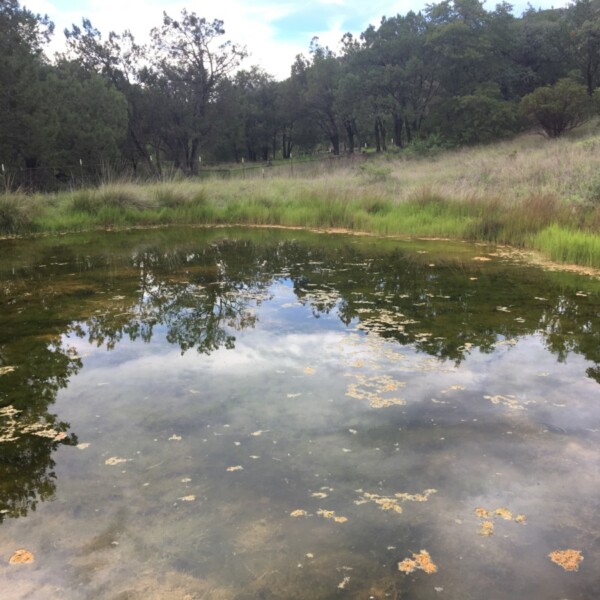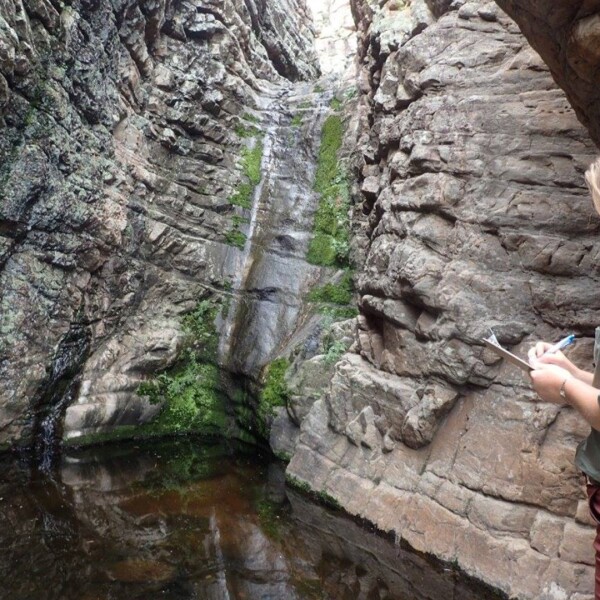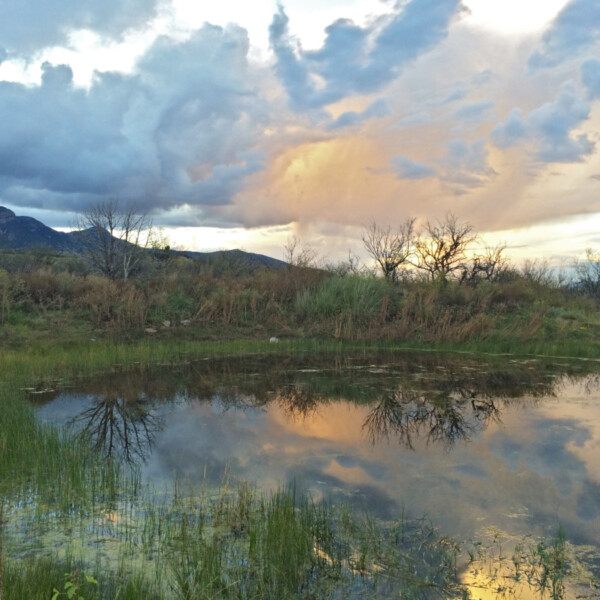Have you ever wondered what a spring is?
Well, a spring is a place where groundwater is exposed or emerges at the surface. Springs are classified into two main categories — lentic and lotic — based on whether the water flows or not. Lentic (sounds like “lenses”) springs form pools, where water may not flow. Lotic springs, however, do flow.
Scientists have even sub-categorized these types of springs into more subtypes, depending on how the water emerges from the ground. In the Sky Islands, water commonly emerges as springs in riverbeds, on the sides of hills, and in wet meadows.
All these types of springs depend on the geology around the spring. Water always takes the path of least resistance, so water flows through permeable rock layers until it hits an impermeable layer. Then, that water travels along the edge of the impermeable layer, sometimes emerging at the surface where all those various layers intersect.
Fun fact: Springs are more common in mountainous areas because there are more opportunities for all these different types of rock layers and the groundwater table to intersect.
What kind of springs are there? Let’s go through them.
Rheocrene springs are the ones that emerge in riverbeds.
(I remember the name by thinking rheocrene springs emerge in riverbeds and those words start with the same letter!)
This type of spring makes up most of the springs in the Sky Island region.
Fun facts: This type of spring was first scientifically described in 1913! It is also one of the most microhabitat-diverse types of springs, supporting lots of different types of plants and animals (source: Springer and Stevens, 2009).

Photo caption: A rheocrene spring on the east side of the Catalinas has water emerging along a stream channel for about 100 yards above this lovely pool.
Hillslope springs emerge on the sides of hills.
This type of spring is the second most common spring type in the Sky Islands.
 Photo caption: This spring in the Whetstone Mountains emerges on a hillside. There is no other flowing or standing water anywhere near this site, making this a pretty special place in the desert!
Photo caption: This spring in the Whetstone Mountains emerges on a hillside. There is no other flowing or standing water anywhere near this site, making this a pretty special place in the desert!
Helocrene springs emerge in meadows.
They are the third most common spring type in the Sky Islands, although they are more common as you move northward from the region. Helocrene springs form from water seeping up in a flatter area, creating a marsh, wetland, or ciénega, all terms for similar types of habitat. This type of spring is critically threatened because management for livestock can interfere with natural meadow spring habitats.
 Photo caption: This helocrene meadow spring at high elevation in the Pinaleño mountains has an earthen dam that at some point was built to collect water near the site.
Photo caption: This helocrene meadow spring at high elevation in the Pinaleño mountains has an earthen dam that at some point was built to collect water near the site.
We have other types of springs, too, where you could see water emerging from caves, geysers, cliffs, pools, or large travertine mounds. There are truly too many to list here.
If you want to learn about other spring types, visit the Spring Stewardship Institute’s webpage on types of springs.
You can also join us in the field as a Spring Seeker this fall to gain some hands-on learning!
References:
Springer, Abraham & Stevens, Lawrence. (2009). Spheres of discharge of springs. Hydrogeology Journal. 17. 83-93. 10.1007/s10040-008-0341-y. Accessed on October 18, 2021 at https://www.researchgate.net/publication/227165369_Spheres_of_discharge_of_springs.



